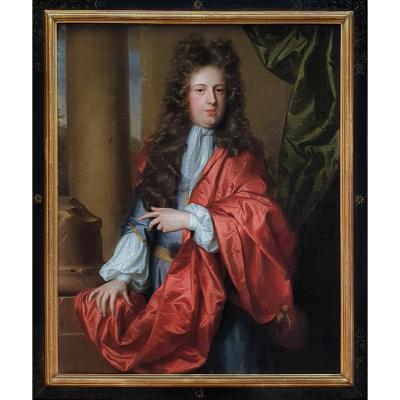The sitter is Gilbert Coventry, 4th Earl of Coventry (c.1668-1719), who was the son of Thomas Coventry, 1st Earl of Coventry and Winifred Edgcumbe. He married firstly Dorothy Keyt in 1694 and secondly, he married Anne Master in 1715 at Guildhall Chapel, London, England. He had one daughter from his first marriage.
The earldom of Coventry was created a second time in 1697, again in the Peerage of England, in favour of Thomas Coventry, 5th Baron Coventry. The Coventry family descends from John Coventry who served as Lord Mayor of London in 1426. The ancestral seat of the Coventry family is Croome Court, near Pershore in Worcestershire.
The sitter succeeded his nephew as 4th Earl of Coventry on 28 January 1711/12. He died on 27 October 1719 at Croome Dabitot, Worcestershire, England, without male issue and the baronial title Coventry of Aylesborough conferred on his great-grandfather, the Lord Keeper, became extinct, but his father's earldom passed to his father's 2nd cousin William Coventry, by virtue of its special remainder. The thirteenth Earl is the present holder of the titles (as of 2016).
This portrait is by the accomplished late-seventeenth century/ early 18th century portraitist, Johann Kerseboom, who was an artist born in Germany and trained in Holland. He came to London in the early 1680’s with his uncle, Fréderic Kerseboom (Frederick Casaubon) who was also a painter and had been a pupil of Charles le Brun in Paris, and then, reputedly, of Poussin during a fourteen year stay in Rome.
Johann set up a practice in London as a painter of portraits from 1680 until his death in 1708, his work reached a remarkably high standard with a great sense of sensitivity. Eight mezzotints after his paintings are known, which indicates a thriving commercial business, as does his collaboration with Jan Van der Vaart who painted the drapery in some of his portraits. The manner in which this painting was executed is admirably graceful and achieves a profound and insightful characterisation. No part of the composition suggests other than the fullest engagement of the artist's skills. Though the postures and designs of Johann Kerseboom’s portraits often follow the formulaic patterns first seen in the works of Sir Peter Lely and Sir Godfrey Kneller, but the characterisation of his heads have recognisable individuality. He is perhaps best known for his definitive and much-repeated portrait of the famous scientist Robert Boyle (1627-1691), held in the Royal Collection.
The expressive action of the hand represents an unspoken communication with the viewer, and conveys courteous diffidence, representing in the static world of the painting the mannered gestures and conversation that were the expression of gentlemanly conduct in late Stuart society. Although the dominant architecture with pilasters may never have existed outside the painter’s imagination it advertises the sitter as a man of education, familiar both with the classical past and the most stylish architectural and cultural taste on the Continent.
Provenance: Private collection Île-de-France, France
Measurements: Height 134cm, Width 110cm framed (Height 52.75”, Width 43.25” framed






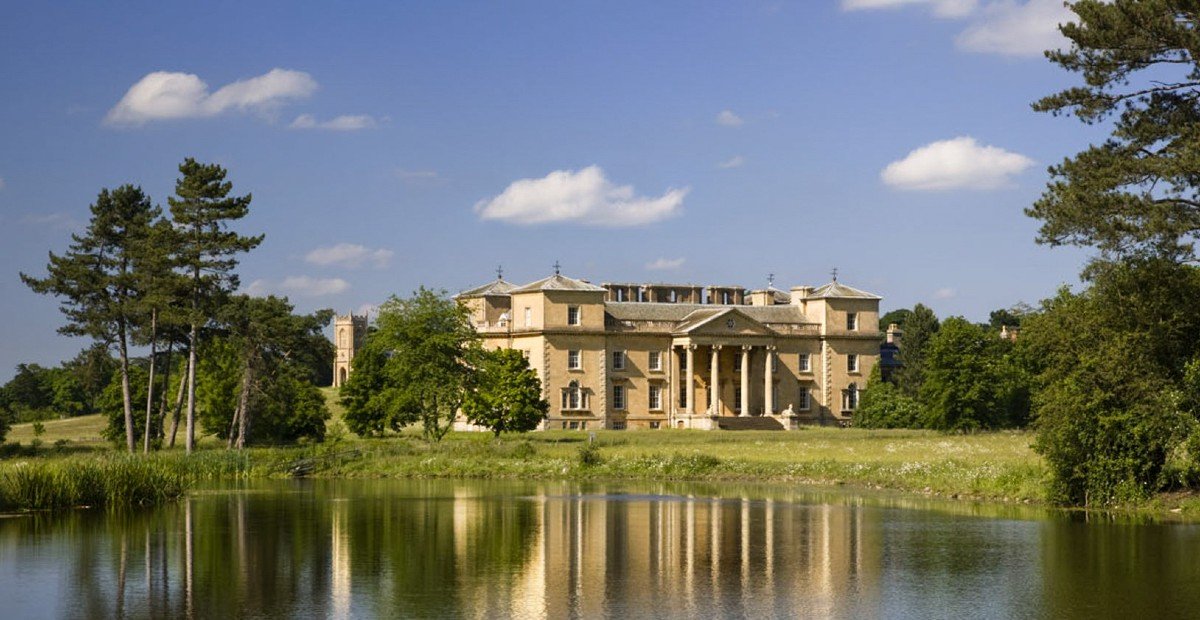


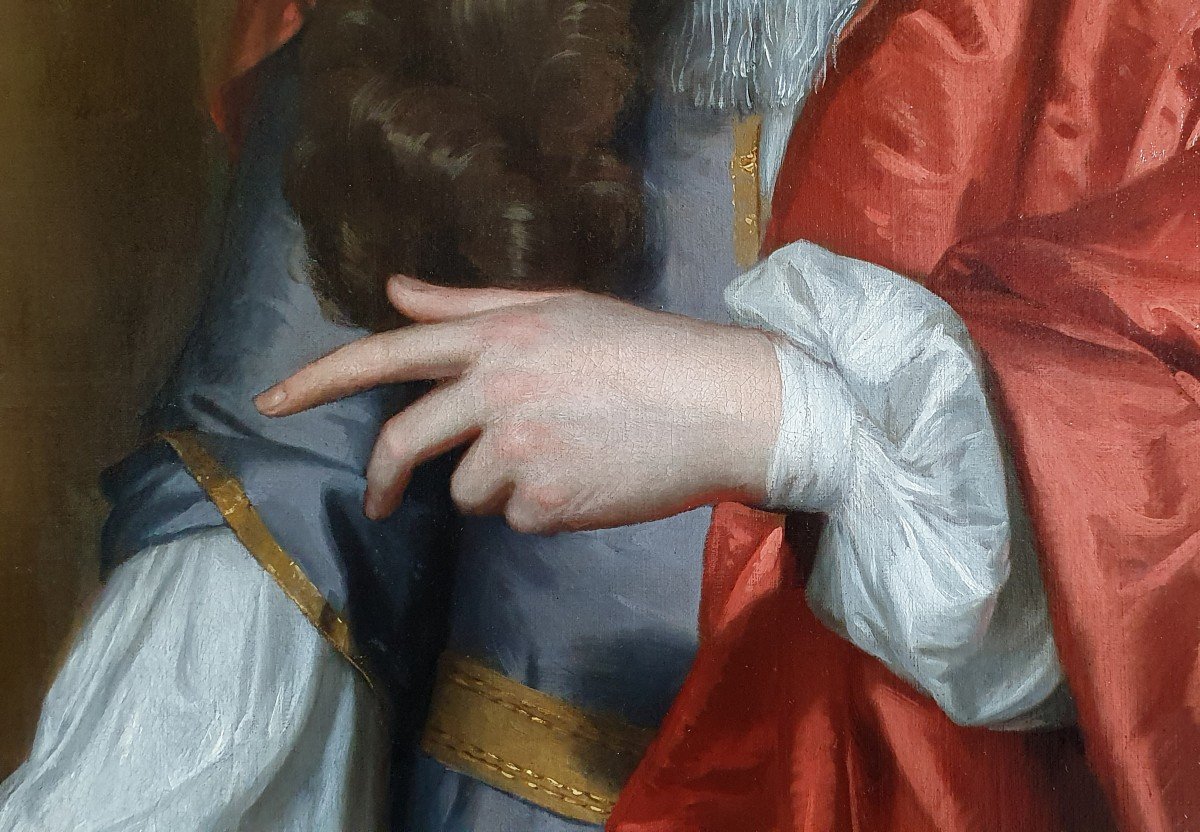



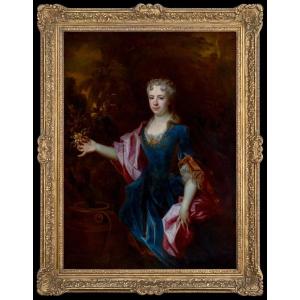




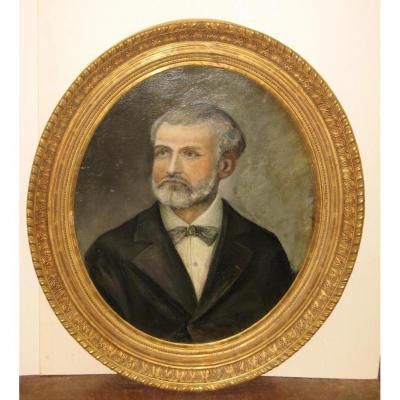

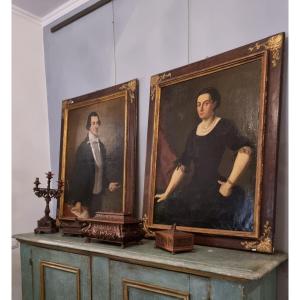

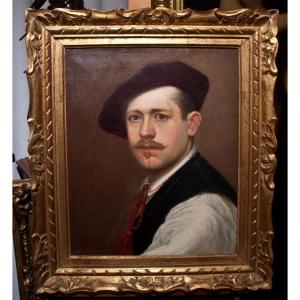




 Le Magazine de PROANTIC
Le Magazine de PROANTIC TRÉSORS Magazine
TRÉSORS Magazine Rivista Artiquariato
Rivista Artiquariato
